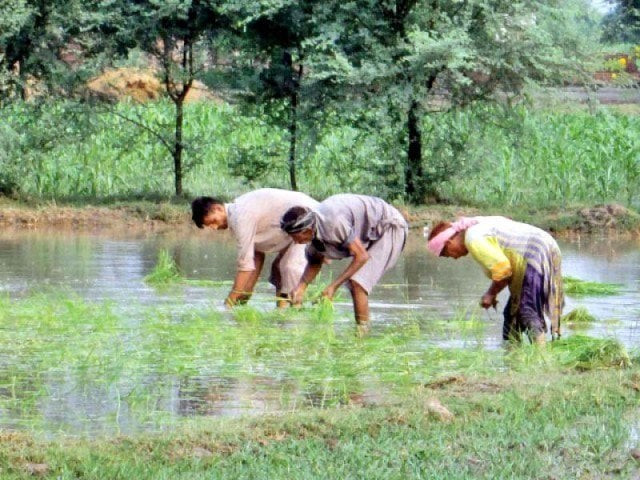
The crisis, which had earlier caused farmers to largely miss cotton seeds’ sowing targets, is now affecting rice plantation, delaying it in Sindh by 1-2 months.
Rice is a summer crop and warmer temperatures are good for its growth. However, the delay in plantation may push its production to October-November, a time when lower temperatures would affect the output.
“Paddy (raw rice) plantation has gotten delayed by 1-2 months,” Sindh Abadgar Board President Abdul Majeed Nizamani told The Express Tribune.
Kharif crops likely to suffer due to severe water shortage
“Farmers started rice plantation from mid-June. This should have been done 1-2 months earlier,” he said, adding the delay has been caused due to a water shortage.
He elaborated in a nursery, rice seeds are sowed mostly between March-April. Later on, they are replanted in appropriate fields by April-May. However, low availability of water during March-April did not allow farmers to begin the process.
“We need around 50,000 cusecs of water in Kotri, lower Sindh. The level is currently hovering around 30,000-40,000 cusecs,” he said, adding water requirement will increase with the passage of time as crops mature for harvesting.
Rice (paddy) is planted across 1.8 million acres to 2.3 million acres of land in Sindh, which mostly grows export quality rice (Irri-6).
Nizamani said it would be too early to estimate the impact on rice production for the ongoing season, as rain could affect the crop.
“The future is completely dependent upon the quantum and timing of the rain,” he said.
Indigenous effort: With hybrid seeds, rice output can rise 2 million tons
“If it rains in time then it will be good for the crop. Otherwise, it could play havoc if it rains heavily and untimely.”
A natural resource management associate, Sono Khangharanr, estimated “30-40% lower production this season due to delayed plantation.”
Rice is usually harvested around October-November. The delay will not let the required level of temperature be available and would affect the crop’s health after November, he said.
The threat to rice production comes after farmers have already missed cotton’s sowing target by around 35% in Sindh due to water shortage, a government official estimated.
BMA Capital’s Economist Muhammad Fawad Khan said the other day that the “water crisis may further hamper economic growth in fiscal year 2019.”
As per international organisations, Pakistan is likely to face a major water crisis by 2025.
State-of-the-art: Scientists introduce latest machine for wheat sowing
The crisis may slow down agriculture growth this fiscal year. Its share in the economy stands at around one-fifth.
Published in The Express Tribune, July 8th, 2018.
Like Business on Facebook, follow @TribuneBiz on Twitter to stay informed and join in the conversation.







1726054615-0/OpenAI-(2)1726054615-0-270x192.webp)









COMMENTS
Comments are moderated and generally will be posted if they are on-topic and not abusive.
For more information, please see our Comments FAQ